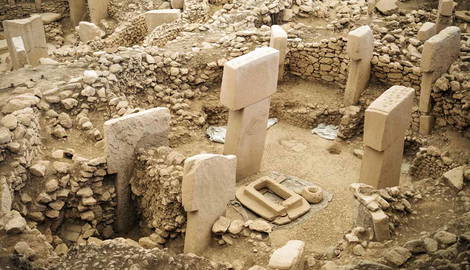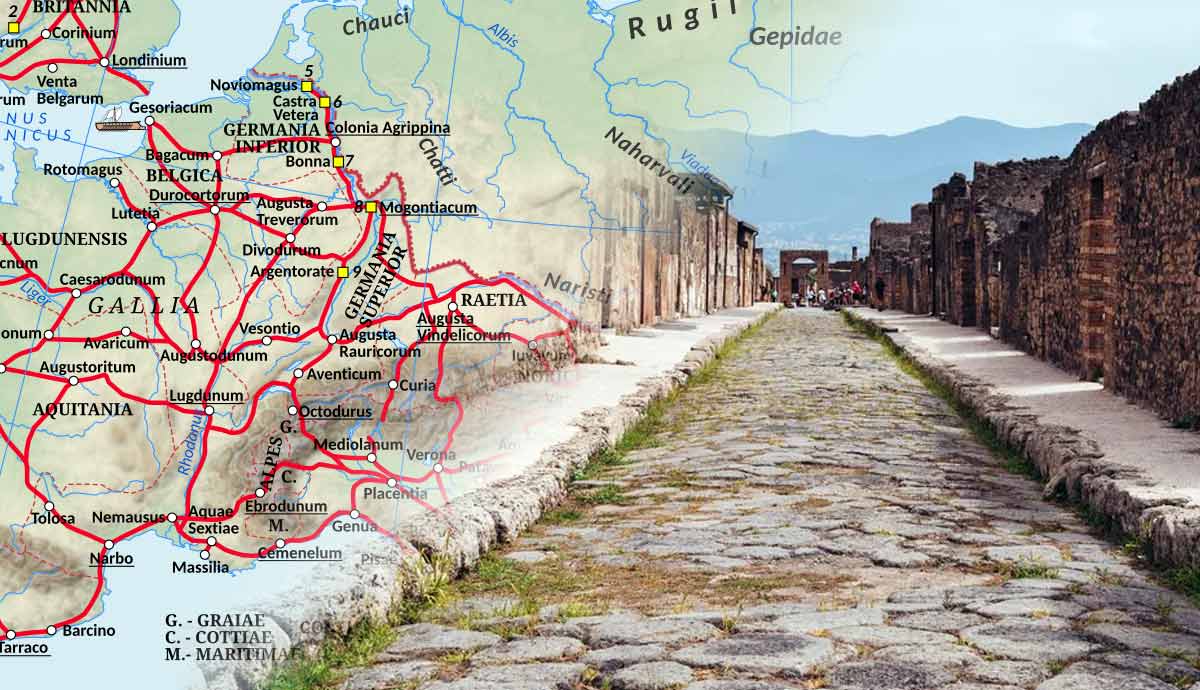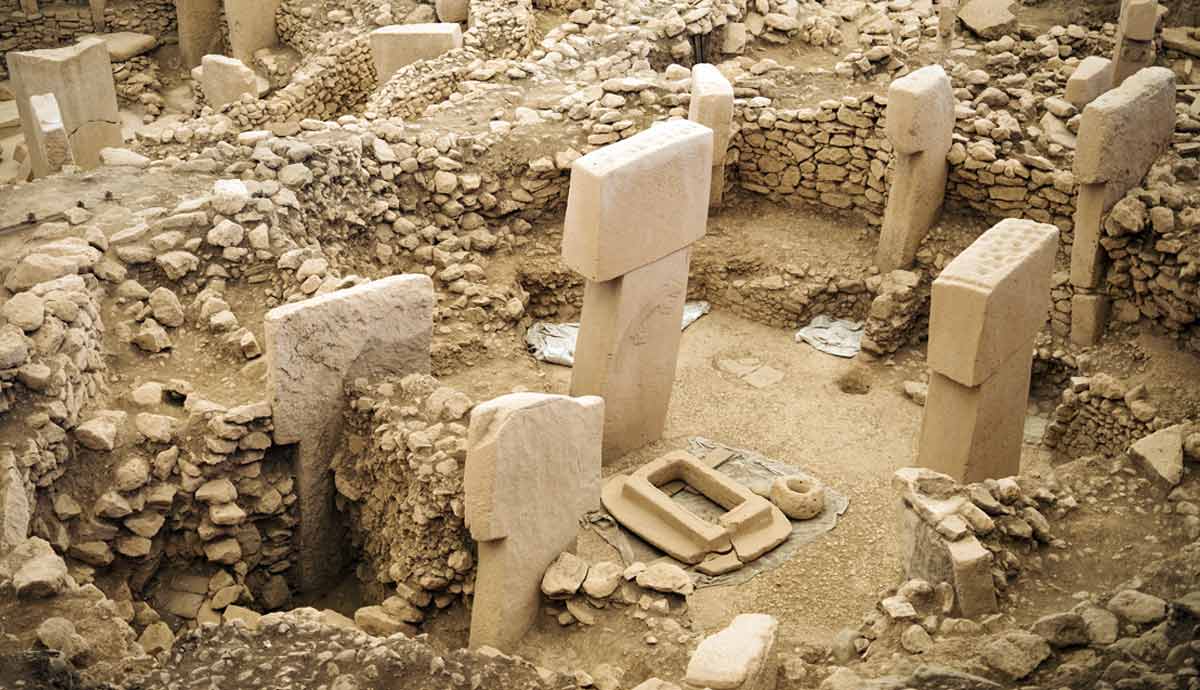
From the very dawn of the Neolithic Revolution, as far back as 11,500 years ago by some estimates, a sacred place of worship was built on a hill now known as Göbekli Tepe, upturning much of what was known and assumed about our Neolithic ancestors.
With relatively little knowledge of the time period, the implications of the discovery are the subject of fierce debate, intense scrutiny, and ongoing investigation. But what has been discovered so far, and what does it tell us about the origins of human civilization?
Discovery of Göbekli Tepe
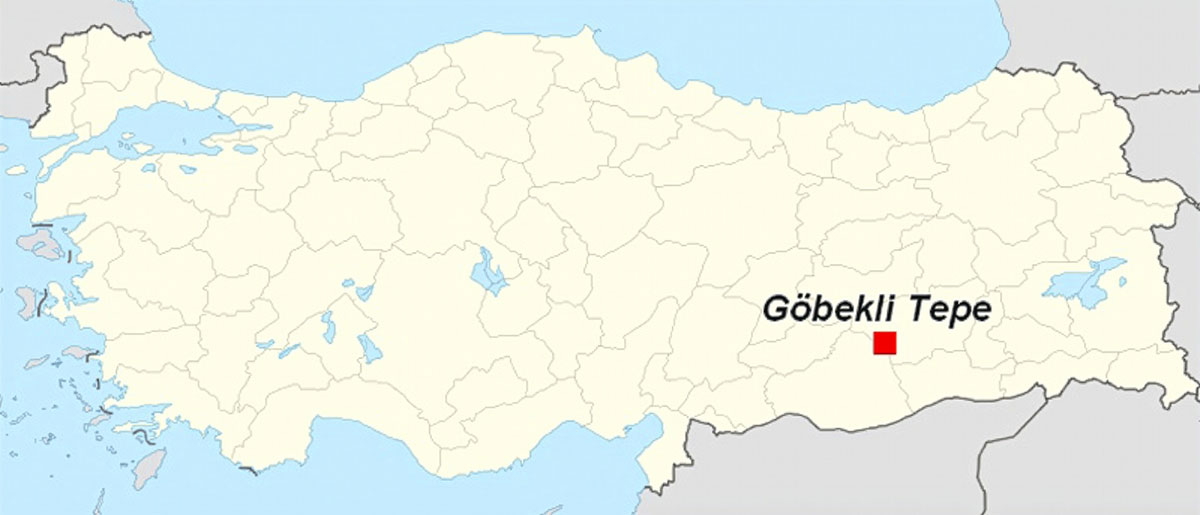
Abandoned and buried for many thousands of years, the discovery of Göbekli Tepe came in 1963 from an archaeological survey, although the significance of what lay buried was unknown. All that could be seen were the tops of the T-shaped pillars, which were mistaken for grave markers.
It took another three decades for the site to begin revealing its secrets. This was due to a German archaeologist, Klaus Schmidt, who recognized the importance of the site in 1994. The following year, excavations began in a slow process of carefully digging trenches, brushing away layers, and sifting dirt. Geophysical surveys done with ground-penetrating radar have also been used, which have revealed the layout of the site.
Layout of Göbekli Tepe
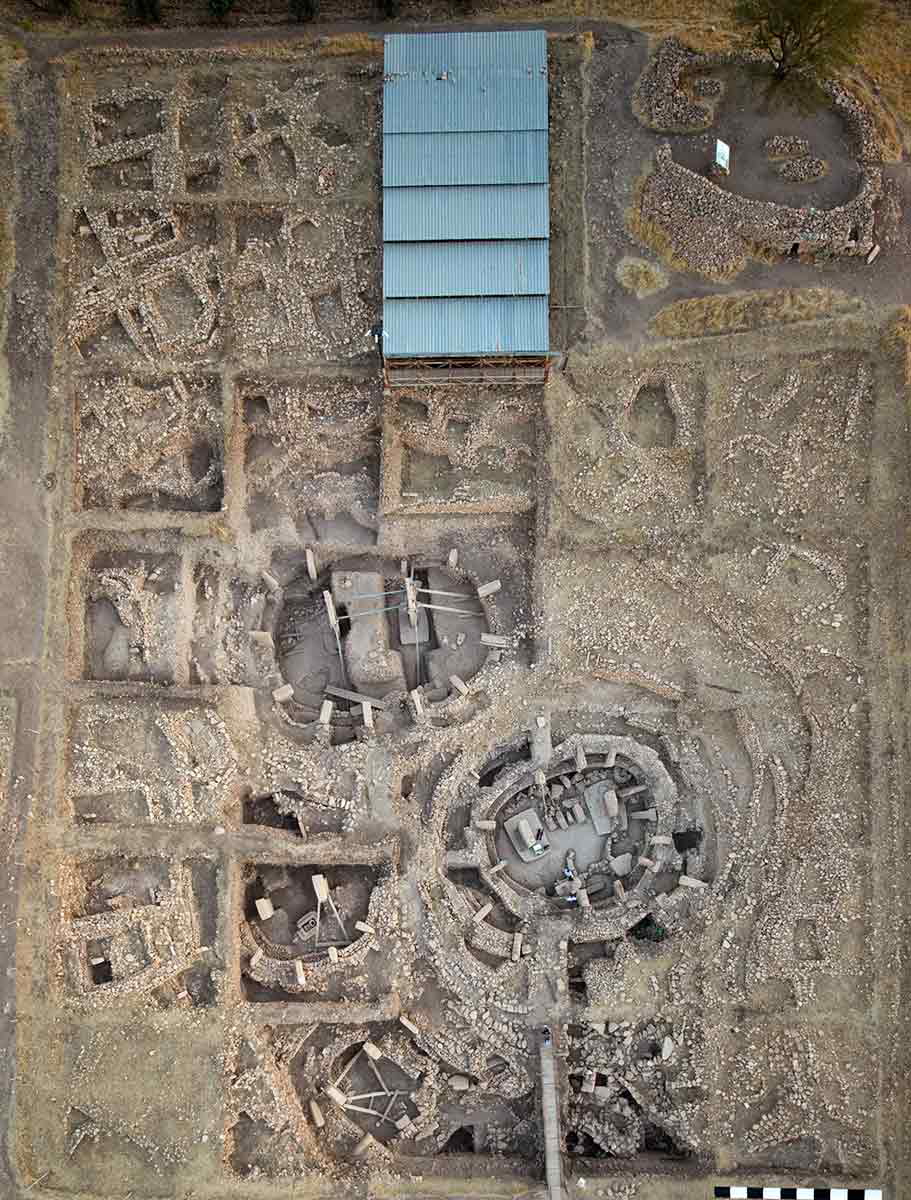
Built upon a rounded, flat-topped hill that overlooks the surrounding area, “Göbekli Tepe” was obviously not the name it was given by those who originally used it. Rather, it is the present name of the hill and translates from Turkish as “Potbelly Hill.”
Upon this hill, Klaus Schmidt uncovered 20 circular stone enclosures, some set inside others, with the largest being 66 feet (20 meters) across. In the center of this enclosure stand two 18-foot (5.5-meter) tall, elaborately carved limestone pillars, which astonished the archaeological community. Each pillar weighs around 10 tons and is adorned with intricately carved, stylized animals.
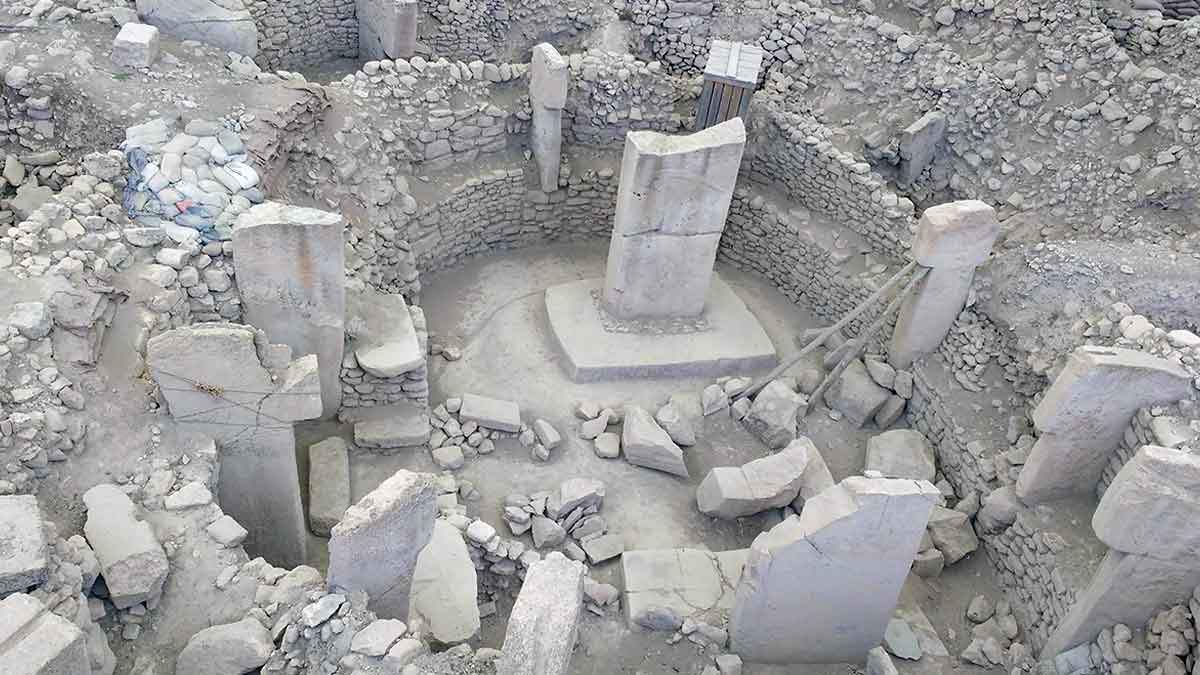
The other circles are also bound by more T-shaped pillars in a theme that repeats throughout the site. The structures weren’t all built at the same time. Excavation has revealed multiple layers, with stone circle enclosures constructed over older ones. The continued alteration and maintenance indicate that the site was in use for an extremely long time.
Although difficult to estimate, evidence shows that only around 5 to 10 percent of Göbekli Tepe has actually been excavated, and for the entire site to be uncovered will likely take many decades—perhaps even more than a century of painstaking work. What we know about the site so far is only a small fraction compared to the secrets the site still holds.
The People Who Built Göbekli Tepe
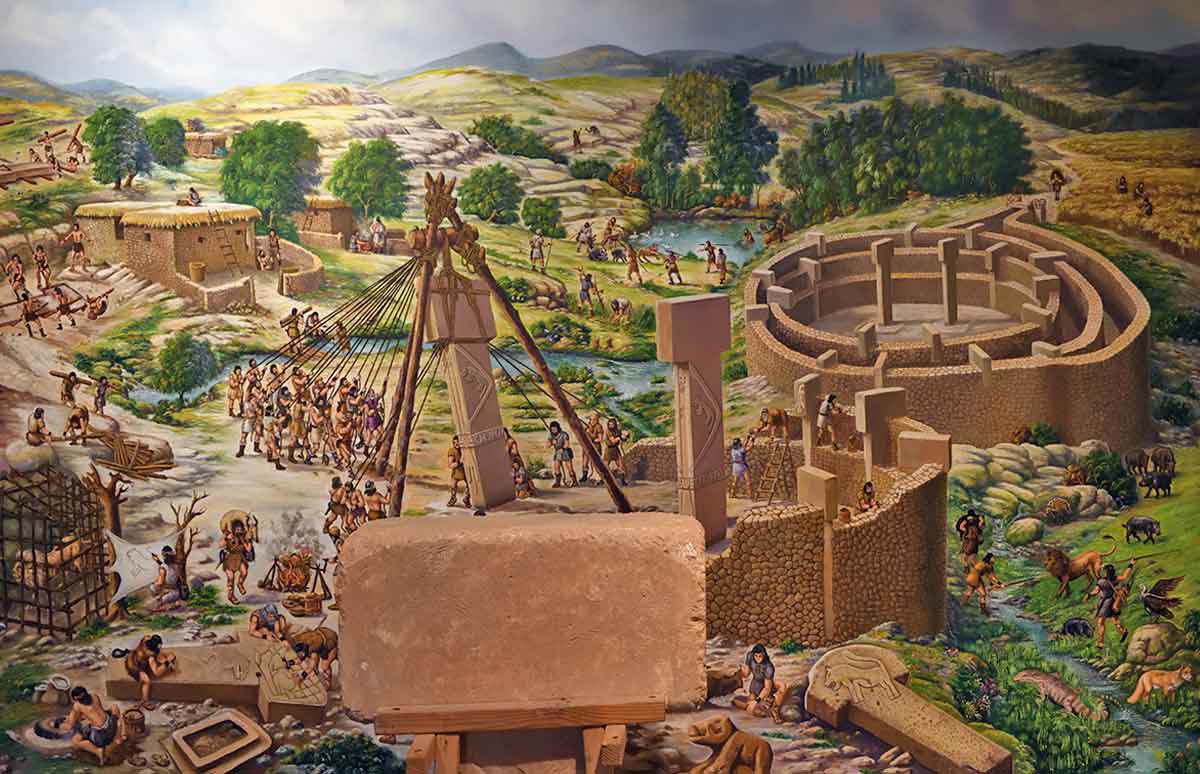
Göbekli Tepe represents a monumental achievement and a significant point of interest in the timeline of the human species. It was built by hunter-gatherers. They had not domesticated animals nor had they discovered pottery, yet they were able to construct something so demanding of skilled and complex labor. The organizational skills required to quarry, transport, and carve the megaliths would have been an effort of considerable intensity. It is theorized that they were semi-nomadic and used the site for religious purposes.
The evidence reversed previous theories that suggested only agricultural societies possessed the capacity to construct such large and complex megalithic structures. It also calls into question the belief that agriculture was the catalyst for civilization. Those who built Göbekli Tepe clearly had knowledge and the resources to build something that is associated with the path to civilization.
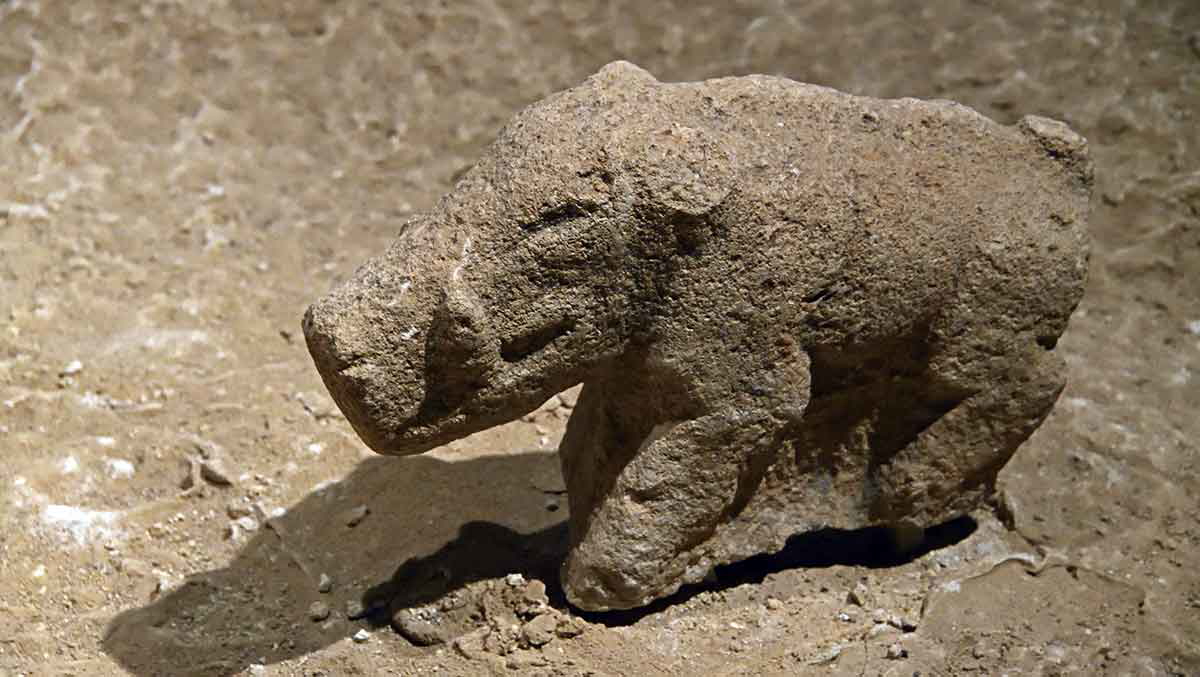
However, evidence also suggests they processed cereals on a large scale, as indicated by the discovery of many grindstones at the site. This marks a transitional stage from a hunter-gatherer to an agricultural lifestyle, although it is believed that the semi-cultivation of cereals supplemented their hunter-gatherer lifestyle, and not the other way round. It is, however, important to note that there is no evidence of grain domestication at the site, and it is suggested that the people of Göbekli Tepe were wary of “Neolithization.”
This intermediary stage from the hunter-gatherer lifestyle to an agricultural lifestyle is not singular to Göbekli Tepe. Other sites with permanent stone structures are exemplified in the prehistoric existence of Jericho and Ain Ghazal, although these settlements flourished later and adopted agriculture. This lifestyle was also supported by the extreme abundance of gazelles and wild grain during this era in the Fertile Crescent.
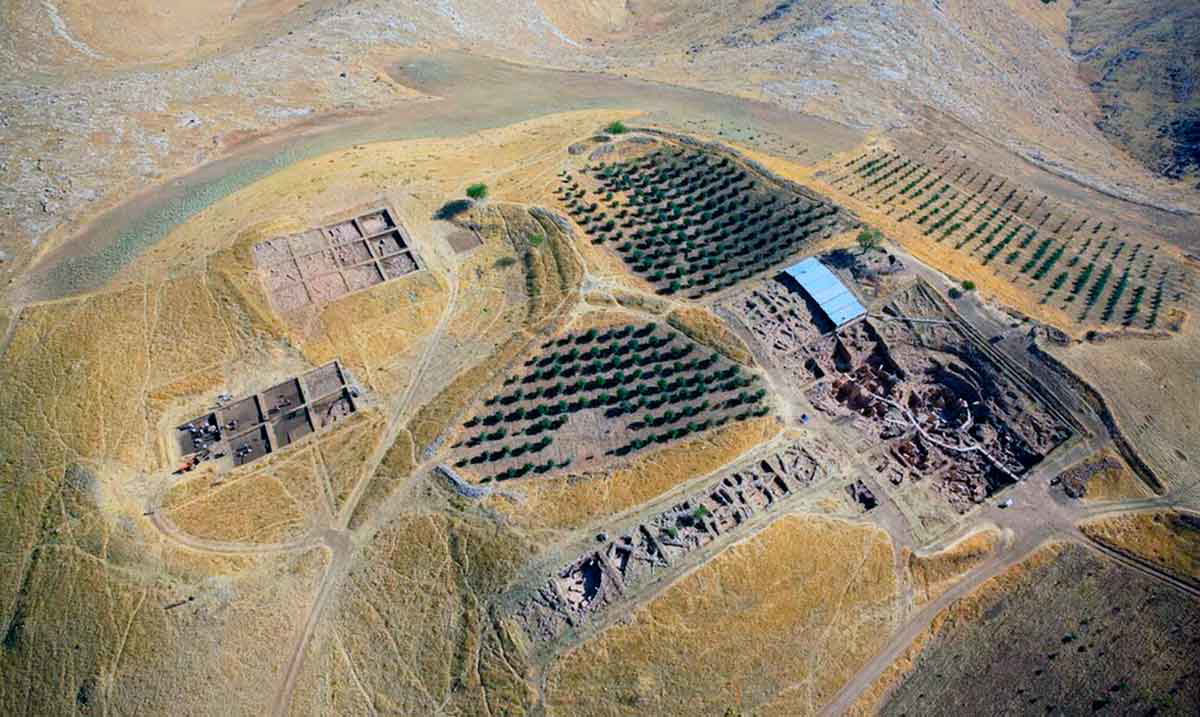
The imagery on the pillars also suggests a hunter-gatherer way of life, and depicts wild animals rather than bulls and cows and other fertility-related imagery. At Göbekli Tepe, the imagery is that of snakes, vultures, foxes, scorpions, and spiders, indicating a more wild narrative than that found in farming communities during the Neolithic.
Religious Purpose and Symbolism
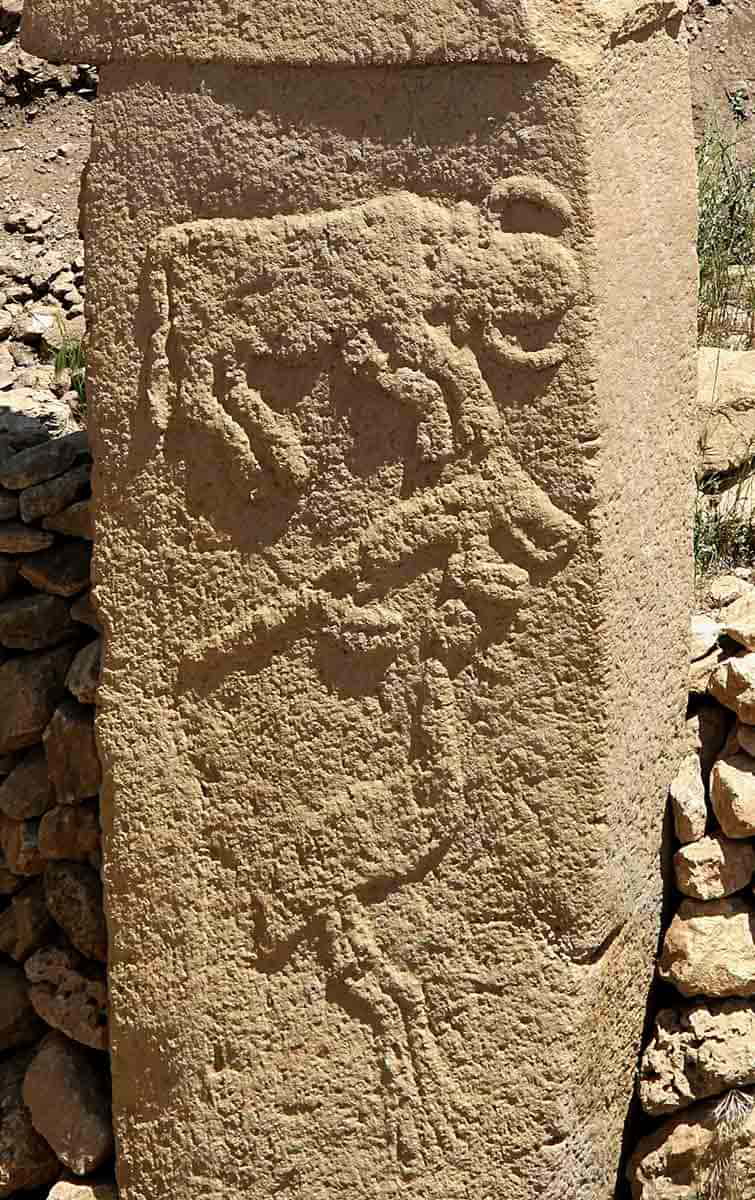
Given the estimated date of the site at over 11,000 years old, Göbekli Tepe represented the oldest megalithic structure ever discovered. What’s more is that, unlike most other structures of the Neolithic, it was not built as a shelter for habitation or to store grain. Rather, Göbekli Tepe’s purpose seemed religious in nature. In this, it represents the world’s first known temple. Stone benches run along the interior of some of the walls, indicating that some of what happened at the site was communal in nature.
Exactly what happened and why it happened are the subjects of educated supposition. Dr Lee Clare of the German Archaeological Institute (DAI), who took over the project of Göbekli Tepe’s excavation in 2014 after Klaus Schmidt’s death, speculates that the site represents a harkening back to hunter-gatherer days for those who built it. Its symbolism of wild creatures represents a yearning for a way of life that was disappearing due to the Neolithic Revolution. Despite a focus on the hunter-gatherer lifestyle, Göbekli Tepe includes buildings around the temple, which were likely used as housing, indicating at least some degree of sedentary living.
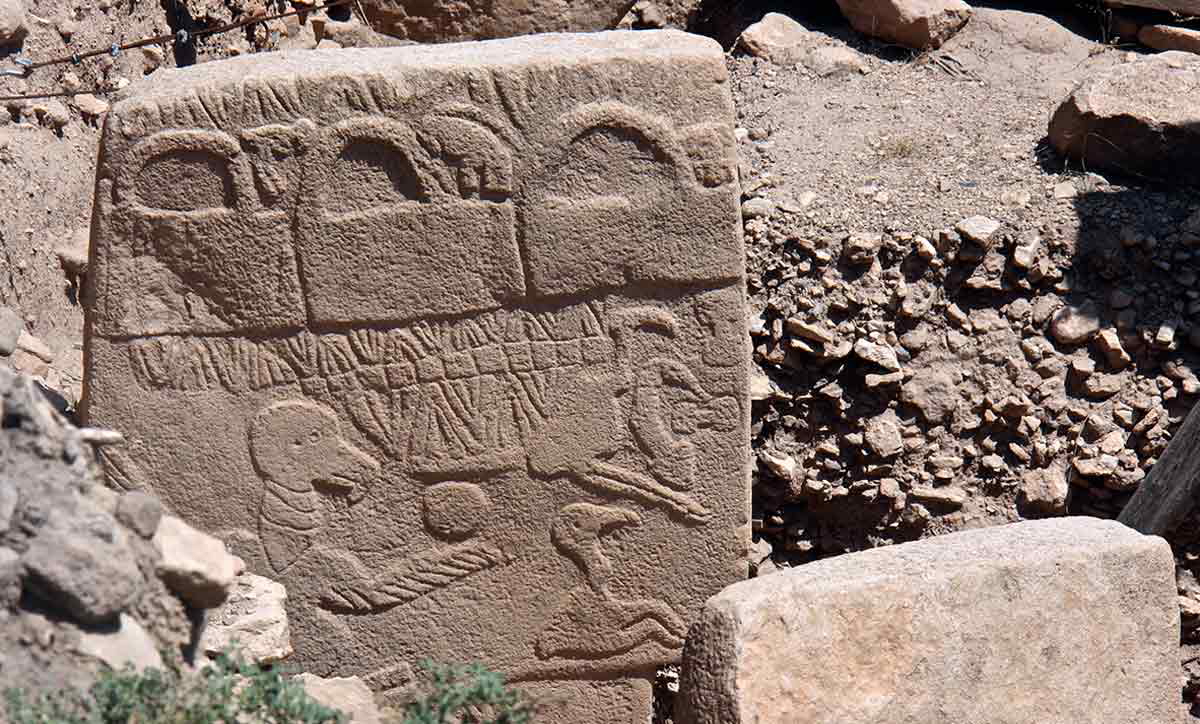
Of symbolic interest are the carvings on the pillars, representing an array of wild animals, as well as abstract symbols whose function can only be guessed at. Of note is Pillar 43 or the “Vulture Stone,” which has a narrative meaning. The pillar contains a depiction of a vulture holding or pointing to a disc, which could represent an egg or a celestial body such as the sun or the moon. The pillar also sports the depiction of another bird, a scorpion, and interestingly, a headless man with an erect penis. What it all means is unknown, but it certainly goes beyond a simple depiction of a natural scene.
Schmidt believed the rituals conducted at this site were done under open skies; however, architect and archaeologist Moritz Kinzel notes that the tops of the pillars have markings which indicate they could have supported roofs. Professor Thomas Zimmerman, an archaeologist from Bilkent University, provides the speculative interpretation that the rituals were androcentric in nature and conducted by firelight. They were a “theater of horror” with depictions of threatening animals ready to attack. This was designed to keep the people of Göbekli Tepe in line, and as Clare states, promote group identity.
Abandonment and Burial
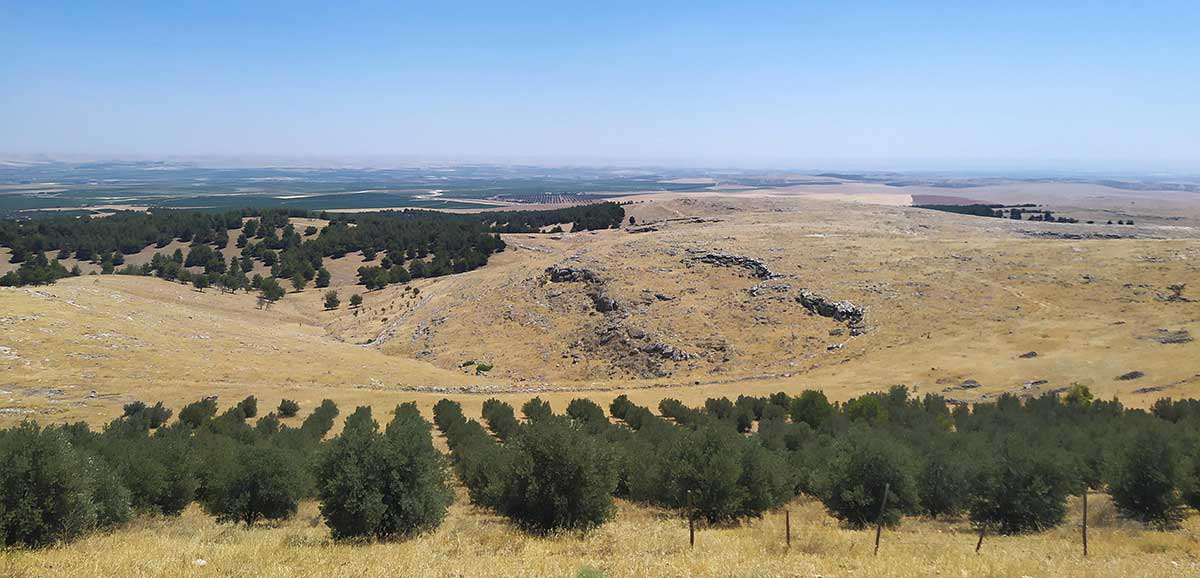
The site began construction around 9,500 BCE and underwent alterations over the centuries that followed. It was eventually abandoned around 8,200 BCE, when the Neolithic Revolution was underway.
The religious purpose of Göbekli Tepe eventually lost its meaning as time and societies changed. The site was abandoned, but not before it was deliberately buried. Exactly why is, like many things about Göbekli Tepe, a subject of debate and supposition, and there are many educated suggestions. Foremost are environmental and societal changes that spurred the adoption of new lifestyles associated with the agricultural revolution.
A new religion could have replaced the one practiced at Göbekli Tepe, and the site could have been filled in as a symbolic ending of an era or a religion, or a de-sanctifying of a religious place. Desanctification in this case has a modern parallel in Christian practice where abandoned churches and their contents are de-sanctified so that whoever uses the building and its contents afterwards is not guilty of sacrilege. Of course, the religion of Göbekli Tepe could even have become an affront to whatever emerged after, demanding an end to its conspicuous appearance.
Today, Gobekli Tepe is an archaeological site that hosts ongoing research, and it was designated a UNESCO World Heritage Site in 2018. It is open to the public via pathways, including a walkway above the site, and is preserved from the elements by protective roofs that shield the site from damage from wind and rain. There is a visitor center, and tourist numbers are limited, and the site is carefully monitored. Touching the stones at the site is forbidden.
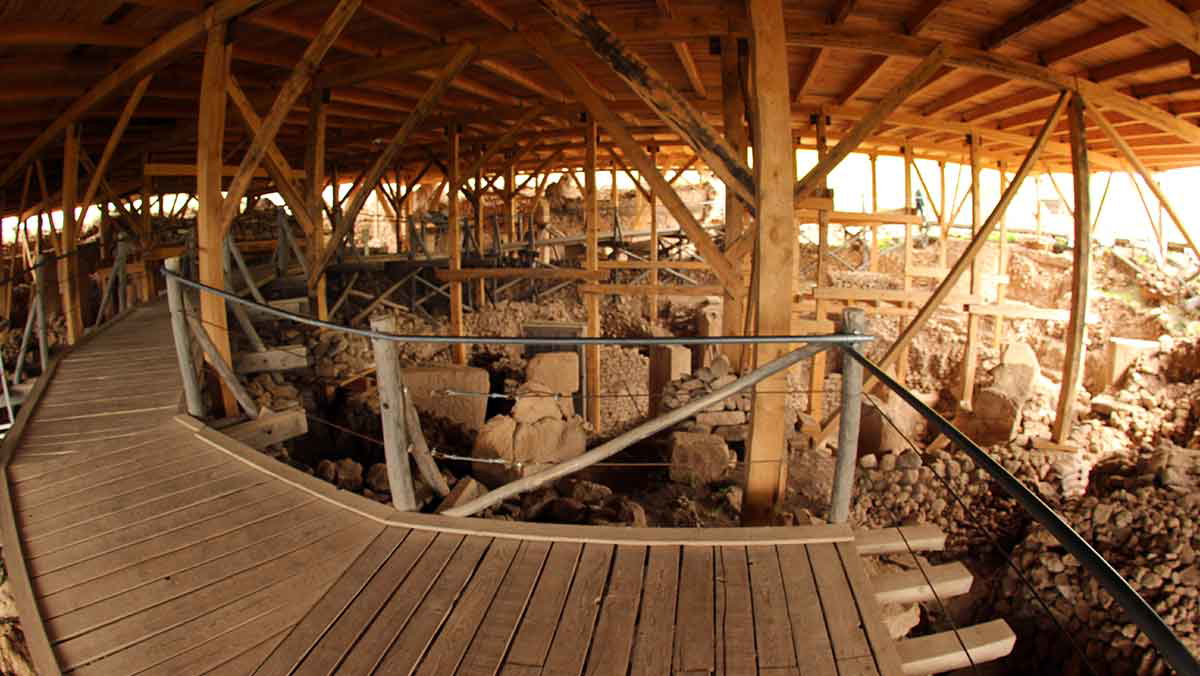
A testament to human ingenuity, Göbekli Tepe is a fascinating site that hides many secrets and has overturned much of what was assumed about humans living at the start of the Neolithic Revolution. And while assumptions often prove erroneous, it is safe to assume Göbekli Tepe has many more secrets to reveal, and will provide archaeologists with greater insights in the years and decades to come.
